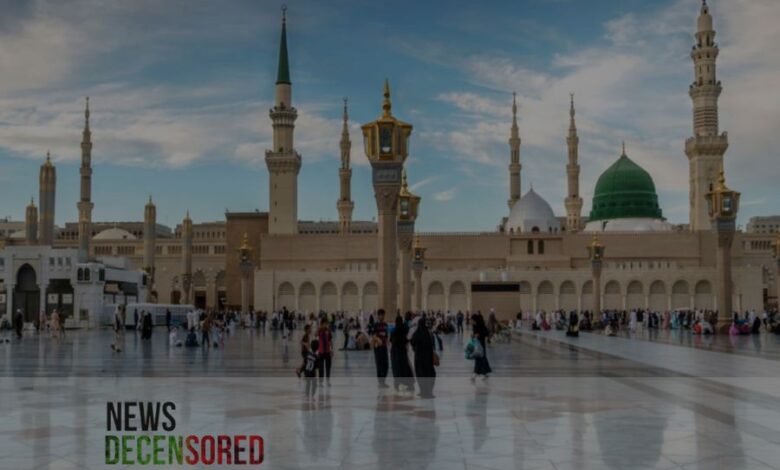Madinah’s historical mosques and tourist spots that captivate visitors

Madinah’s historical mosques and tourist spots that captivate visitors” Every year, millions of Muslims visit Madinah for Hajj and Umrah, which is considered the first capital of Islam. After Mecca, this city is considered the second holiest city in Islam, where the Prophet’s Mosque built by the Prophet of Islam is located.
Built-in the year 622, this mosque is still considered one of the largest mosques in the world. The first mosque of Islam ‘Masjid-i-Quba’ is also located in the same city. Before the advent of Islam, the city was known as ‘Yathrib’ which was known for its commercial and geographical importance and had mountains, plains, oases, gold, silver, and copper mines.
According to the Saudi tourism website ‘Visit Saudi’, Muslims and foreigners can visit Madinah’s tourist attractions without any restrictions. These places include Jabal Uhud, Jabal Zabab, Jabal Al Ramah (Archer’s Hill), and Jabal Noor. All these places have religious significance. Many museums are also located in Madinah where you can have a look at the history of this city.
Quba Mosque:
Only three and a half kilometers away from Masjid Nabawi is the first mosque of Islam, which was founded by the Prophet of Islam himself. It is believed that the Prophet of Islam spent four days in Quba before entering Madinah and Muslims believe that the reward of going to the Quba Mosque with the intention of prayer is equal to one Umrah. Many people visit it for its unique architecture and historical significance. It has four minarets with a height of 47 meters with a white dome, of which the construction of the first minaret is attributed to Hazrat Umar Ibn Abdul Aziz.
Hijaz Railway:
The Hijaz Railway was built in 1900, connecting Damascus to Medina. It began operating in 1908 and continued in operation until World War I in 1916. However, it suffered.
The palace of Urwa bin Al-Zubayr:
This place, built in the first Hijri, is one of the signs of the beginning of the Islamic era, which is about three and a half kilometers away from the Prophet’s Mosque. It was constructed of stones with a layer of mud and plaster. Some floors have brick tiles and volcanic stone.
Qiblatain Mosque:
It is said about this mosque located in the Banu Salama area of Madinah, that during two Hijri, the order of Qibla direction was received during prayer in this same mosque. The Prophet of Islam and the Companions turned their faces towards the Kaaba in Makkah instead of Bait al-Maqdis in Jerusalem during the prayer. Since the same prayer is performed in this mosque facing two different qiblas, it is called ‘Masjid Qiblatin’ i.e. a mosque with two qiblas.
Al Bint Dam and Khyber:
Khyber has numerous archaeological remains that visitors must stop and contemplate. Although historical stories differ about how the Albinat Dam was built, this does not detract from the glory of the dam. Al-Bunt Dam, also known as Sahba Dam, is believed to have been built 3000 years ago during the Sheba period. This dam is similar to the Marib Dam in Yemen. Its strong rocks separate the Herat Khyber from the dam waters on the other side.
Ali Mosque:
The Ali Ibn Abi Talib Mosque, located in the Masjid Fateh area, is a place for visitors to Madinah that showcases the Islamic cultural heritage. It was built between 706 and 712 with the last renovation in 1990 during the reign of King Fahd Ibn Abdulaziz Al Saud.
Jannat al-Baqi:
Jannat al-Baqi is the oldest Islamic cemetery in Medina. Companions, family members, and many personalities are buried here. Baqi refers to the place where wild plants are found.




